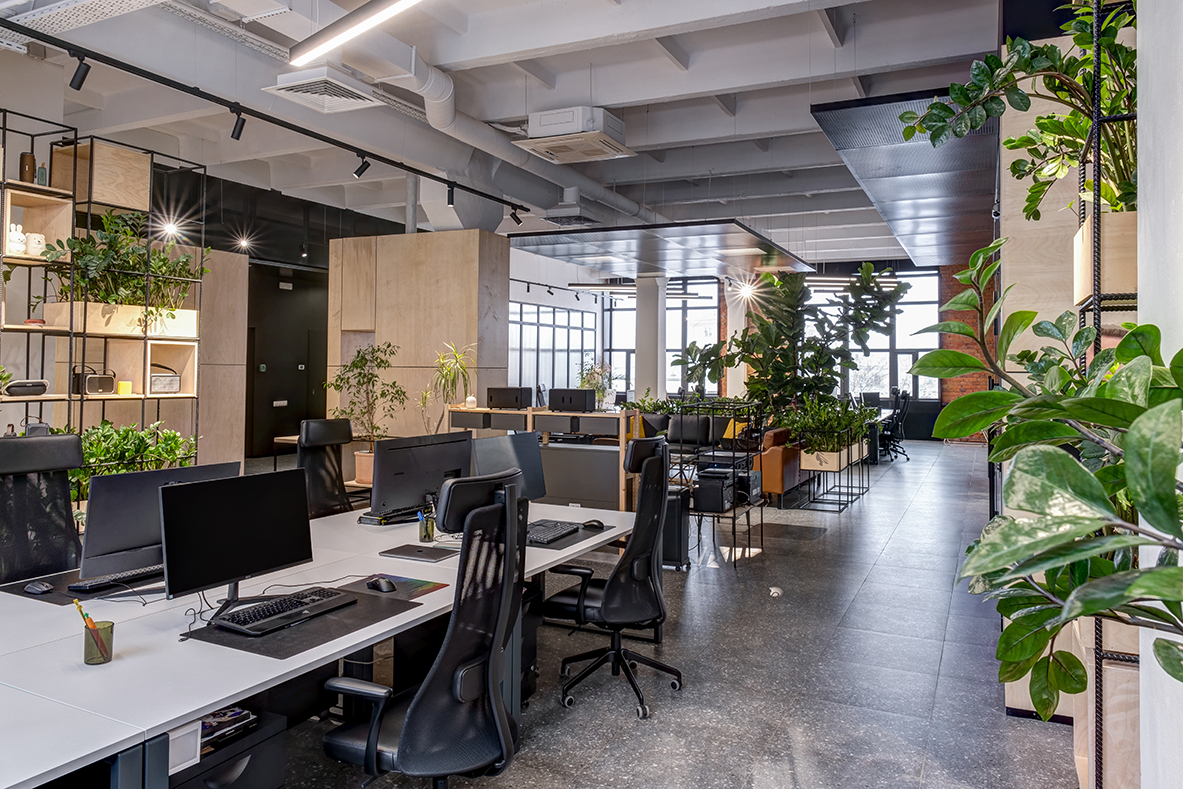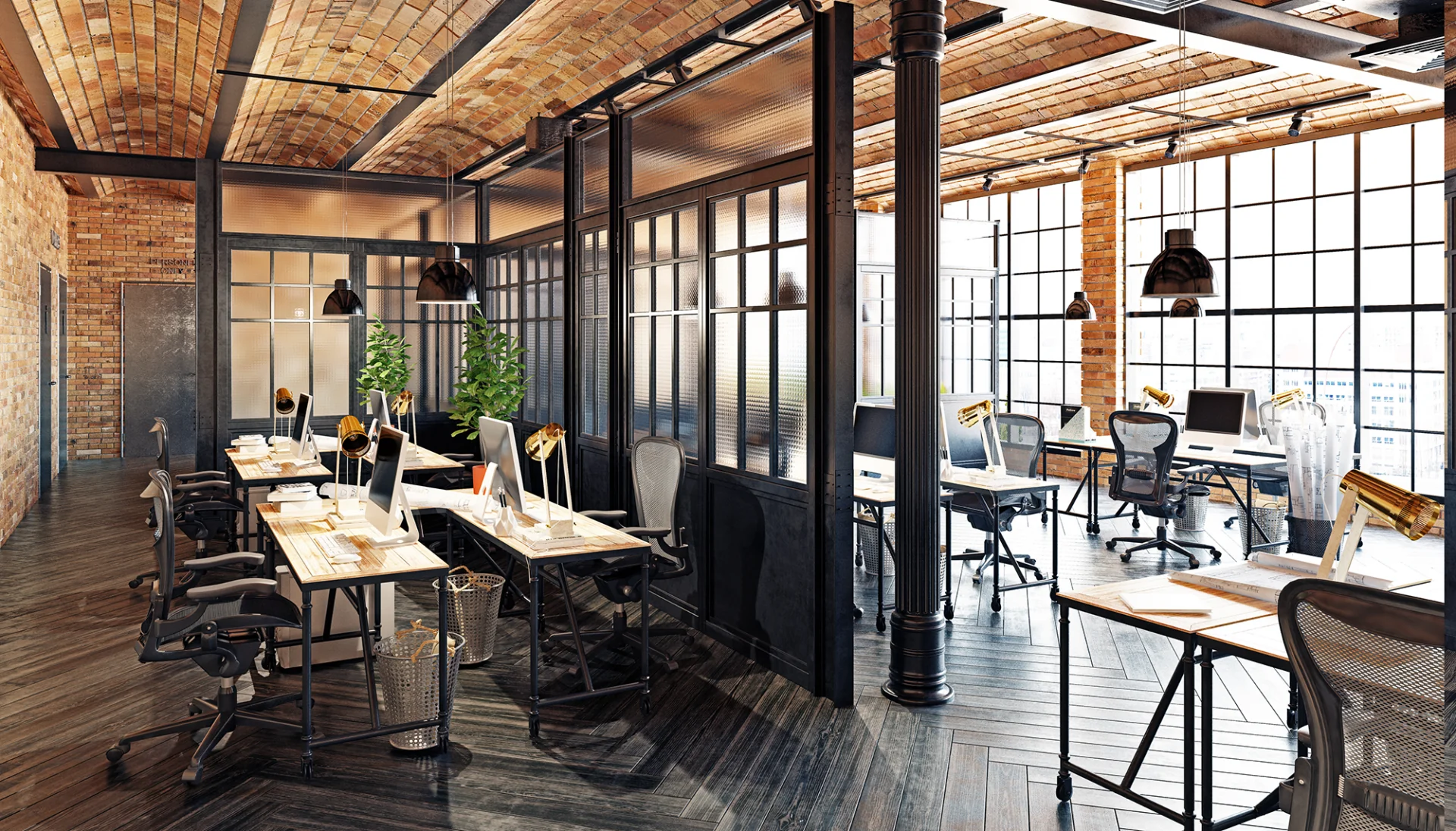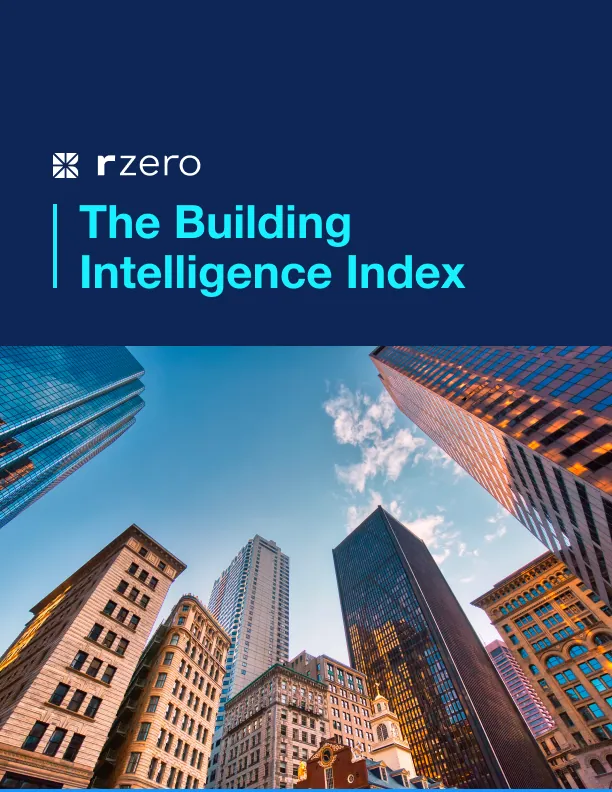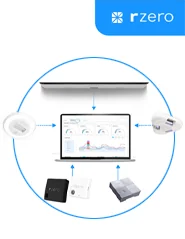
Smarter ventilation, lower cost: a guide to reducing HVAC energy without disruption
This guide is for energy leads and operations teams evaluating R-Zero. It outlines how our platform delivers measurable HVAC energy savings—not through expensive capital upgrades or disruptive equipment replacements, but by intelligently reducing airflow where it’s not needed and improving the efficiency of air movement through smarter filtration.
Static schedules vs CO₂ vs occupancy-driven control
Traditional HVAC systems are wasteful by design:
- Static schedules run ventilation systems regardless of actual usage, conditioning empty zones unnecessarily.
- CO₂-based demand control reacts slowly—ventilation ramps up only after CO₂ builds, which means comfort issues emerge before the system responds.
In contrast:
- R-Zero’s Occupancy-based demand control ventilation (O-DCV) uses live headcount data to adjust ventilation instantly when people enter—or leave—a space.
⚠️ In a 60-minute meeting, CO₂ might not trigger ventilation until halfway through.
R-Zero reacts in real time, from minute one.
Where energy savings really come from
R-Zero’s HVAC energy savings aren’t about turning systems off—they’re about making every operating hour more efficient. Two core improvements drive this:
- Zone-level ventilation reduction through occupancy-driven control: When fewer spaces are occupied, closing off / reducing air to those empty spaces (partially or closing VAV dampers) reduces the volume of air that air handler fans need to move and the volume of air that needs conditioning. The result? Lower chilled water, hot water, and fan energy loads—even when the AHU remains on.
- Lower fan power from filtration upgrades: Traditional filters create high pressure drop from day one and clog quickly, forcing fans to work harder and use more energy. R-Zero’s filters start with significantly lower pressure drop and maintain lower pressure drop longer. In fact, an R-Zero filter will maintain a lower pressure drop for 2-3 times longer than the traditional filter replacement cycle. In other words, if you replace filters quarterly, after 3 quarters of use, the original R-Zero filter will still have a greater pressure drop than the new traditional filter you just swapped in. This means lower fan energy at all operating hours and lower wear on air handler fans, extending their life and easing your maintenance burden.
Together, these improvements deliver consistent HVAC energy savings without compromising comfort or requiring changes to your BMS logic.
🗣️ “Show me how many hours we shut off HVAC—and how that extends equipment life—then I’ll write the check.”
— Asset Manager, National REIT
Filters that save energy all the time
Most savings models ignore the hidden energy cost of air filters. Traditional pleated filters increase pressure drop as they clog, driving up fan energy and shortening replacement cycles.
R-Zero’s electrically enhanced filters:
- Reduce pressure drop by 30-50%
- Last 2-3x longer than pleated filters
- Cut fan energy and reduce filter changes
Combined with occupancy control, filters significantly lower HVAC energy usage and reduce facilities workload.
What kind of savings are possible?
Let’s tie it all together. Imagine a 250,000 sq ft office building in Midtown Manhattan:
- 10 air handlers run most of the day to meet tenant needs
- The system currently uses 20 filter positions per AHU, or 200 pleated filters overall, changed every 6 weeks
- HVAC is scheduled full-building from 6am-8pm, regardless of occupancy
With R-Zero’s O-DCV and filtration:
- Occupancy-driven control reduces airflow in unoccupied zones—less air to condition = lower chilled/hot water load
- Electrically enhanced filters reduce pressure drop and clog more slowly
- Comfort improves, thanks to faster HVAC response and IAQ safeguards
This is how R-Zero delivers energy, comfort, and operational wins—without disruption.
Variable ventilation savings
Let’s say your AHU costs $7.50/hour to operate, combining fan energy, chilled/hot water, and maintenance.
If R-Zero reduces average airflow by 20% across the day:
- Total annual savings: ~$6,000-$10,000 per AHU, $60,000-$200,000 for the building
- Plus deferred maintenance and longer filter life
This doesn’t include energy rebates, avoided tenant complaints, or HVAC lifespan extension
Filtration and labor
With traditional filters replaced every 6 weeks:
- That’s ~9 changeouts per year x 200 filters = 1,800 filter changes/year
- At 8 minutes of labor per filter: 240 hours/year of labor
R-Zero filters last ~18 weeks:
- Only ~3 changeouts/year x 200 filters = 600 filter changes/year
- At 8 minutes per filter: 80 hours/year of labor
➡️ Net labor saved: 160 hours/year — equivalent to ~4 full work weeks of technician time. That’s time back to focus on more pressing issues like hot/cold calls, tenant complaints, or deferred maintenance.
All in:
Outcome:
- $60,000-$200,000 energy savings for the building
- ~160 hours/year of saved maintenance labor
- Better comfort, no tenant complaints, no BMS rewrite, and no construction
Why this works without disruption
- No write access to your BMS
- Overlay install—no construction, no changes to HVAC logic
- Uses your buildings own behavior patterns to reduce airflow and protect comfort
- Occupants are more comfortable than with traditional CO₂-based DCV, which reacts slowly and can lead to complaints
- Built-in IAQ monitoring (CO₂, temperature, humidity) serves as a “floor”—ensuring ventilation never falls below comfort thresholds, even during low occupancy
🛠️ “We didn’t have to change anything about our HVAC logic. R-Zero just made it run smarter; and less.”
— Director of Operations, Mixed-Use Office Portfolio
TL;DR
This isn’t another efficiency pitch. It’s a smarter way to:
- Reduce HVAC energy and OpEx
- Extend equipment life
- Reduce fan energy and filter load
- Deliver measurable savings without touching your BMS
Ready to quantify the opportunity in your building? Let’s run a pilot.
More posts you might like
-

How to Pilot SecureAire Filters
A Step-by-Step Guide for Facilities Teams Cut HVAC energy use, extend filter life, and improve indoor air quality—without disrupting operations. Piloting R-Zero’s SecureAire filters is a smart move for facilities teams seeking to enhance HVAC performance and air quality while achieving energy savings. This guide walks you through how to plan and execute a data-driven […]
-

The Energy Efficiency FAQ: Clear Answers to Common Questions About Smarter Buildings
When people first learn about R-Zero’s platform, they often have smart, valid questions, and a few common concerns. Some are based on past experiences with other systems. Others come from how building operations used to work. This FAQ is here to give you clear, straightforward answers. Just helpful context on how R-Zero fits into your […]
-

Why Air Quality Sensor Placement Matters
Whatever your reason for installing indoor air quality sensors — whether you’re focused on improving or proving air quality, or validating HVAC energy savings or filter upgrades — IAQ sensors are only as useful as where you place them. The right positioning ensures you’re capturing meaningful, occupant-relevant data, not just system metrics. This helps: Even […]

